Rifftides: January 2008 Archives
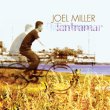 Joel Miller, Tantramar (ArtistShare). The Canadian saxophonist and composer, summoning up scenes from his New Brunswick boyhood, pulls off the neat trick of creating pleasant sketches that have depth. The swagger of Miller's tenor sax soloing and the complexity of the intertwining sextet lines he wrote make "Syriana" one of many highlights, the clever writing and allusion to Miles Davis in "Anonymity" another. The CD includes atmospheric vocal touches by Miller and Amelia MacMahon and an infectious gospel-cum-R&B romp called "Big Tiny." Great fun.
Joel Miller, Tantramar (ArtistShare). The Canadian saxophonist and composer, summoning up scenes from his New Brunswick boyhood, pulls off the neat trick of creating pleasant sketches that have depth. The swagger of Miller's tenor sax soloing and the complexity of the intertwining sextet lines he wrote make "Syriana" one of many highlights, the clever writing and allusion to Miles Davis in "Anonymity" another. The CD includes atmospheric vocal touches by Miller and Amelia MacMahon and an infectious gospel-cum-R&B romp called "Big Tiny." Great fun.
Marc Copland, New York Trio Recordings, Vol. 2, Voices (Pirouet). 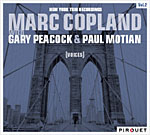 Copland employs harmonic audacity even as he creates an air of calm. He is abetted by the rhythm team of bassist Gary Peacock and drummer Paul Motian, musicians in their seventies whose skill and daring set standards for those in their twenties. Copland applies his pianistic and conceptual skills so that no matter how far he takes the listener beyond expected limits of harmony, nothing sounds "wrong," merely intriguing, often breathtaking. With one exception, the tunes are by Copland and Peacock. Peacock's "Albert," presumably with the late pianist Albert Dailey in mind," has a jaunty Ornette Coleman flavor. Copland's "River's Run" has what it takes to start showing up as a jazz standard. Copland, Peacock and Motian offer, in addition to the originals, an inspired performance of a classic, Miles Davis's "All Blues."
Copland employs harmonic audacity even as he creates an air of calm. He is abetted by the rhythm team of bassist Gary Peacock and drummer Paul Motian, musicians in their seventies whose skill and daring set standards for those in their twenties. Copland applies his pianistic and conceptual skills so that no matter how far he takes the listener beyond expected limits of harmony, nothing sounds "wrong," merely intriguing, often breathtaking. With one exception, the tunes are by Copland and Peacock. Peacock's "Albert," presumably with the late pianist Albert Dailey in mind," has a jaunty Ornette Coleman flavor. Copland's "River's Run" has what it takes to start showing up as a jazz standard. Copland, Peacock and Motian offer, in addition to the originals, an inspired performance of a classic, Miles Davis's "All Blues."
Jack Sheldon, It's What I Do (Butterfly). 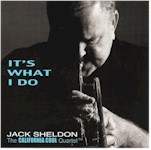
It's what those who know that he is a great trumpeter wish Sheldon would do more often on record. He is accomplished in singing and in blue comedy, but he does neither here. Sheldon simply (ha) performs with amazing flexibility, his distinctive bebop harmonic sensibility and the round, gorgeous tone that made hearts ache in movie theaters forty years ago when he played "The Shadow Of Your Smile" on the soundtrack of The Sandpiper. The tunes are by Coltrane, Davis, Monk, Strayhorn and Parker. Sheldon calls his excellent band The California Cool Quartet, which may lead to an assumption that this is warmed-over west coast jazz from the fifties, laid back and nonchalant. It is not. It is emotionally hot and timeless.
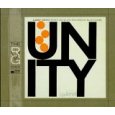 Larry Young, Unity (Blue Note). Unity was the 1965 album that brought Young to prominence and established that there was a place for the Hammond B-3 organ on the cutting edge of jazz. Elvin Jones is the powerhouse drummer on a session that also includes trumpeter Woody Shaw and tenor saxophonist Joe Henderson at their peaks of creativity. This reissue in Blue Note's Rudy Van Gelder series is a basic repertoire item and a terrific way to jolt yourself out of the winter doldrums.
Larry Young, Unity (Blue Note). Unity was the 1965 album that brought Young to prominence and established that there was a place for the Hammond B-3 organ on the cutting edge of jazz. Elvin Jones is the powerhouse drummer on a session that also includes trumpeter Woody Shaw and tenor saxophonist Joe Henderson at their peaks of creativity. This reissue in Blue Note's Rudy Van Gelder series is a basic repertoire item and a terrific way to jolt yourself out of the winter doldrums.
Dennis Irwin, the stalwart bassist of The Vanguard Orchestra and hundreds of recordings, has cancer and no medical insurance. Irwin is fifty-six years old.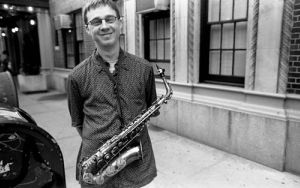 Friends and admirers are organizing a series of benefits for him, beginning next Sunday following the Super Bowl. It will begin at 10 pm at the Lower Manhattan jazz club called Smalls, 10th Street and Seventh Avenue, just down the street from the Village Vanguard. Musicians are encouraged to sit in. For information, go to this page at the Smalls web site and scroll down to February 3.
Friends and admirers are organizing a series of benefits for him, beginning next Sunday following the Super Bowl. It will begin at 10 pm at the Lower Manhattan jazz club called Smalls, 10th Street and Seventh Avenue, just down the street from the Village Vanguard. Musicians are encouraged to sit in. For information, go to this page at the Smalls web site and scroll down to February 3.
There will be an Irwin benefit with the Vanguard Orchestra on Monday, February 18 at the Village Vanguard, 178 Seventh Avenue South.
Tenor saxophonist Joe Lovano is organizing still another benefit for Irwin at Lincoln Center's Allen Room on Monday, March 10. Details are being formulated. Lovano reports that big names will be involved.
Organizers of the Smalls benefit say that those who cannot attend but would like to help Irwin may send checks made out to Sixteen As One Music, with the notation "Dennis Irwin" on the memo line, to:
Sixteen As One Music, Inc
888-C Eighth Ave. #160
New York, NY 10019
Irwin played with Red Garland in Dallas while he was still a student at North Texas State. Since he arrived in New York in 1975, he has anchored the rhythm sections of Art Blakey, Horace Silver, Mose Allison, Chet Baker, the Mel Lewis Orchestra, Johnny Griffin and John Scofield, among other groups. His power of propulsion and impeccable note choices are important in small bands like the one led by drummer Matt Wilson in this recording and large ones like the Vanguard Orchestra in this CD.
The Rifftides discussion earlier this month about jazz and poetry brought this response from Angela J. Elliott in England.
Jazz poetry is not dead and it doesn't smell funny either. Well, at least it seems that way in the USA. There appears to still be an interest in it beyond the hip hop and rap idiom. Over here in Blighty I play to jazz audiences who seem to think that the spoken word at a jazz venue means you can't sing. Only at a literary bash can you expect an honest and fair reception.I came across jazz poetry by way of Langston Hughes and Ken Nordine. I sit in on a lot of rehearsals with my partner, bassist Louis Cennamo, and as a published author I found that the only things I could write whilst listening were poems inspired and informed by the jazz I was hearing. I guess this is how Hughes did it. Anyway, from that small beginning I'm planning gigs with a fellow poet and have managed to pull together a six-man band including vibes and two horn players. Things are looking up!
Ms. Elliott's web site has information about her and a link to samples of her poetry. You'll find an additional Rifftides post about poetry here.
A favorite story about Al Cohn: A friend who hadn't seen him for a long time ran into Cohn on the street in New York and said, "Hey, Al, where are you living these days?"
"Oh," Al said, "I'm living in the past."
I've been having a couple of Al Cohn days. As executor of the estate of Jack Brownlow, last week I was going through things in his house. I came across two thick three-ring binders labeled "Letters" and was surprised to discover that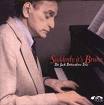 Bruno had saved every letter I wrote him over several decades. In them, I found reports of events I had forgotten about. Because some of the letters concern matters Rifftides readers may find of interest, from time to time I'll post portions of them. The one below was written from Los Angeles following a road trip. It now includes links to some of the people and places it mentions. I have also added illustrations. Some of the opinions I express have changed in seventeen years, and I now have lots of John Corigliano's music. The puzzling salutation follows the practice Bruno and I adopted of using a first name to set up the use of a last name that more or less resembles another word. Silly? Corny? Sure it is, but that's how we were.
Bruno had saved every letter I wrote him over several decades. In them, I found reports of events I had forgotten about. Because some of the letters concern matters Rifftides readers may find of interest, from time to time I'll post portions of them. The one below was written from Los Angeles following a road trip. It now includes links to some of the people and places it mentions. I have also added illustrations. Some of the opinions I express have changed in seventeen years, and I now have lots of John Corigliano's music. The puzzling salutation follows the practice Bruno and I adopted of using a first name to set up the use of a last name that more or less resembles another word. Silly? Corny? Sure it is, but that's how we were.
November 13, 1990Dear Vincent,
I guess it's about time you were Herring from me. My week in New York was packed with activity--journalistic, foundational, touristy and musical. I'll tell you only about the music I heard and about the New York Marathon. That Sunday it was false summer. . .77 degrees.. .and the town was full of people from all over the world running in or watching the marathon. It was exciting, like an enormous fiesta, or carnaval in Rio, although I don't recall seeing any bare-breasted women. I stood at the southeast corner of Central Park and watched the runners come around the final sweep. People were standing six deep along the roadway, shouting encouragement in 17 languages. I shouted encouragament in only six. Why show off?
When an exhausted runner faltered or slowed to a walk, the crowd would shout, "go, go, go," "vaya, hombre," "corre, madre," "lun, lun, lun," "laufen zie, laufen zie." Cruel, I thought; it was certainly no laufen matter to the poor guy in agony out there. I stood there for a couple of hours watching. It was fascinating, hypnotic. I was inspired, for a few minutes, to train for next year's marathon.
The first night in New York, I agonized over the possibilities: Mehta and the NY Philharmonic at Lincoln Center, Dutoit and the Montreal at Carnegie Hall, the Knicks at Madison Square Garden or chamber music at the Merkin Concert Hall. The choice was easy, actually; the first three were sold out. I'm glad they were, because the concert at Merkin was superb. It was a tribute to William Schuman on his 80th birthday and he was there in that 400-seat hall, which was maybe two-thirds full. He chose "In Sweet Music" and "Night Journey." They were the two pieces of his that he most wanted to hear. He got great rounds of applause after each, standing and blowing kisses to the musicians, who played the music beautifully. Wonderful pieces, too.
Also in the audience was
John Corigliano, who got to hear a fantastic performance of his Sonata For Violin And Piano. Sidney Harth is a big, amazingly fat, man who plays the violin both delicately and with incredible passion. What a performance. I don't have any of Corigliano's music, but I heard the NY Phil premier his First Symphony on a broadcast a few weeks ago and liked it . He's tonal but, within tonality, adventurous as hell, outrageous even, moreso than del Tredici. Good as all that was, the highlight of the concert was the Ives Trio, an astounding piece of music. I'm sure you're familiar with it. At any rate, it was a thrill to see William Schuman. There was a reception afterward, and anyone in the audience was free to go to it, but what would I have said to Schuman or Corigliano? "Far out, baby. The end, y 'know? Straight ahead, man. You sure write good for an old cat. You know Hovahness personally?"So, I went downtown to Bradley's and listened to Geoff Keezer with Peter Washington on bass and Steve Nelson, vibes.
You'll be happy to know that Keezer is even more impressive in person and that he looks not 21, but about 12. Lots of Bud Powell and Monk in his playing, more than I've detected on records. The place was crowded, so I was put at a table near the piano with a couple of guys one of whom took it upon himself during a break to give Keezer advice. Your true calling, he said (based on what I can't imagine), is to go to Hollywood and write scores for movies. You could outdo Herbie Hancock, he said. Out of embarassment and in fear that Keezer would think I was with this oaf, I stared at the floor and once when I glanced up saw that Keezer was also staring at the floor. Later, after the oaf had left, I said to Keezer, do not go to Hollywood, do not score motion pictures, keep on playing bebop. "Of course," he said.
Two nights later I went to the Blue Note for a Blue Note Records party. The band turned out to be Jerry Bergonzi, Joey Calderazzo, Adam Nussbaum and Dave Santoro. Bergonzi is a marvelous tenor player who worked with Brubeck a few years ago and has grown tremendously. Calderazzo is a stompin' young piano player who has worked with Miles on organ and has a couple of records out on Columbia, Santoro is a very good bass player of whom I 'd never heard. Nussbuam, however, was the star as far as I was concerned. He is a hell of a drummer. He played a sixteen-bar intro to one piece that was pure Blakey. A tribute, I guess, since Art had just died. A surprising and truly enjoyable evening.
The next night
Orrin Keepnews and I went to dinner at El Parador, a favorite restaurant, it turns out, for both of us from the days when we lived in New York. Orrin was in NYC from San Francisco to work on some Bluebird reissues for RCA/BMG and to do a Nat Adderley session for his own label, Landmark. We were both staying at the Algonquin. Then we went to the Village Vanguard to hear Clark Terry, who had Victor Lewis, Don Friedman and a bass player whose name I've forgotten. All were playing very well, indeed. Clark and I had a reunion, with lots of laughing and hugs.
In the audience was
Nellie Monk, Thelonious's widow, who never goes anywhere, but came out for this because Monk thought so much of Clark. Orrin and Nellie hadn't seen each other for 19 years and they had a great reunion, as did Nellie and Clark. Nellie told Orrin a lot about Monk in the final years, things nobody knows. I was not a party to that private conversation.
CT asked me if I was still playing the flugelhorn he got for me years ago. I didn't lie; I said yes. In fact, I played it tonight with a new Tommyy Newsom CD. Tommy Newsom? Yes, his album, with Conte Candoli, Snooky Young, Dave Stone, Ed Shaughnessy and Ross Tompkins. Newsom adored Zoot and plays like him, without quite the passion, swing or harmonic stuff. But he plays well. It's a nice CD on the LaserLight label.
On Thursday, I went to part of the Nat Adderley session. Nat, Vincent Herring, Jimmy Cobb, Walter Booker and a fine young pianist from Brooklyn named Rob Bargad, who replaced Larry Willis. Herring, especially on "Arriving Soon," sounded so much like Cannonball it was almost ghostly. Happy ghost. His sound is not quite as expansive as Cannon's, but then neither, as Orrin pointed out, is his body.
Nat and I hadn't seen one another, except for about three minutes once, since the days when the Adderley band used to spend so much time in New Orleans in the sixties. He greeted me warmly. He and I weren't as close as Julian and I and the other day he asked me where Cannon and I used to go all the time. I told him I couldn't remember specifically, but that it inevitably had to do with food. "Well," he said, "I'd like to have come along." I think he genuinely had felt left out, and I was kind of guilty about it and told him so and that seemed to make him feel okay. It wasn't as if we were ditching little brother, but Nat apparently saw it that way. I thought he and (Joe) Zawinul were sometimes leaving us out of things. We humans are a sensitive bunch, aren't we?
The band sounded good. Bookie is not a great bass player, particularly in terms of sound, but he has a lot of heart, works his fanny off, and Nat digs having him on the band. Which is nice, I think. Jimmy Cobb works as hard as Bookie and is a great drummer. Herring is astounding. I assume you have heard him. He has two or three records under his own name.
As for CDs, I have two of the Blakeys you mentioned. One For All is good. Brian Lynch's feature is beautiful trumpet playing. Phillip Harper, who is on I Get A Kick Out Of Bu, struggles through every tune. You asked how fusion nonsense gets on otherwise good records. It's because not only the producer but also the artist believes it will result in money. It is not mere rhetoric when I say that all of that fusion/crossover/new age crap sounds alike. I have sat on my stool in front of the CD player auditioning review copies, playing tracks from dozens of albums because I think that if a record company sends it I have an obligation to at least sample it. So I've heard a lot of it. It sounds alike in terms of harmonic structure, rhythmic patterns, sound mix, instrumentation and imbecility. And when a good musician like Dave Weckl or John Patitucci is the guilty party, it's that much sadder.
I haven't heard anything lately that I like better than the newest Artie Shaw reissue CD on Bluebird, Blues In The Night, with Lips Page, Roy Eldridge and some incredible Eddie Sauter charts. The digital remastering is masterly, so to speak. Keepnews strikes again.
Cheers,
DR
Sometimes I miss New York.
More than a month following his death, tributes to Oscar Peterson continue to materialize. The writer Rick Seifert, who blogs from Portland, Oregon, adds to them with his memories of Peterson. This one is from Seifert's youth in the midwest.
I'd venture into Chicago on nasty winter nights to listen to "The Trio," as it was aptly called. No other jazz trio rivaled it. The Windy City venue was the up-scale London House along Michigan Avenue. As the snow gusted and swirled off the lake, pianist extraordinaire Peterson, guitarist Herb Ellis and bassist Ray Brown warmed the place with high-voltage jazz. The players would have all been in their thirties at the time -- and feeling it.
To read all of Seifert's piece, go here.
In Jazz Matters: Reflections on the Music and Some of its Makers, I wrote this about the tenor saxophonist Ben Webster:
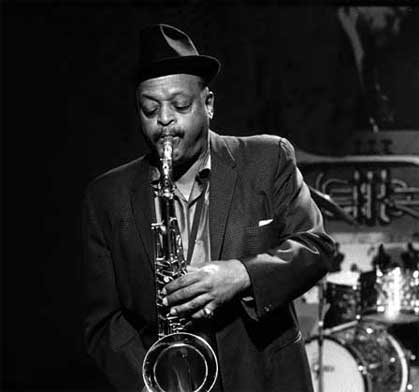
In the beginning his playing was modeled closely on the dramatic, sweeping, even grandiose, style of (Coleman) Hawkins. But over time, Webster pared away embellishments and rococo elements, while maintaining warmth and a big tone, and created a style that with force and clarity appeals directly to the emotions. Or, as the critic Martin Williams put it, Webster became a great soloist when "he accepted the limitations of his fingers and embouchure and became a simple and eloquent melodist."
All of that came to mind when I ran across a piece of video of Webster playing in Europe with Oscar Peterson, Niels-Henning Ørsted Pedersen and Tony Inzalaco. Webster could be cantankerous, intimidating; one of his nicknames was The Brute. When he wasn't drinking, he was gentle. Look for the expression on Peterson's face when Ben's solo ends. It is emblematic of how other musicians reacted to Webster's playing -- and how they still do. Ben Webster died in Holland in 1973 not long after this video was made. The piece is "Perdido." The picture quality is far higher than much internet video, so if you can watch if full-screen, please do. Here's the link.
Go here and here for previous Rifftides posts about Ben Webster.
Keith Jarrett, Gary Peacock and Jack DeJohnette have stayed together as the
Standards Trio for a quarter of a century. How? Why? Associated Press writer Charles J. Gans wondered, and spoke with the three. Here's a little of what Jarrett told him:
If you meet the perfect other two people for your needs in a musical jazz situation, why would you force yourself to go around the corner and find two other people to play with?
Gans discloses the surprising information that except for one date when Paul Motian substituted on drums, Peackock and DeJohnette are the only two jazz musicians Jarrett has played with since 1983. To read his article, go here. To read the Rifftides take on the trio's latest CD set, go here.
Marc Myers is devoting three days of his excellent Jazz Wax blog to a discussion of the Paul Desmond Quartet with Jim Hall. I have the honor of being his guest discusser. We talk about the RCA Victor recordings and the earlier Warner Bros album of the Desmond quartet. This is a link to the first installment.
I was surprised in searching the internet to see that although the individual RCA albums and single-CD compilations are generally available, 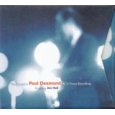 the box set of the complete recordings is becoming hard to find. The Warner Bros album, originally titled First Place Again and once reissued as East Of The Sun,
the box set of the complete recordings is becoming hard to find. The Warner Bros album, originally titled First Place Again and once reissued as East Of The Sun, 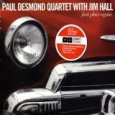 seems to be available only as a bootleg import CD. I suppose that is better than not having it available at all. Some recordings, like some books, should be in print forever.
seems to be available only as a bootleg import CD. I suppose that is better than not having it available at all. Some recordings, like some books, should be in print forever.
A part of the Q & A with Myers concerns Desmond's musical relationship with Dave Brubeck. I tried to give some insight, but language is inadequate to describe music. The best understanding of music, and therefore of musical relationships, is gained through listening. In the case of Desmond and Brubeck, this 1959 performance in Rome takes us a long way. The piece is "These Foolish Things," whioh they transformed together for decades. It is a fine demonstration of Brubeck's skill as an ideal accompanist for Desmond. Desmond's solo is so good that when it ends even he seems pleased, a rare occurence.
Terry Teachout is making progress on his biography of Louis Armstrong. He just wrote a chapter in three days Take it from a writer; that's blazing progress. He gives a sample on his blog. Among other things, it deals with Armstrong's life on the road and with Henry "Red" Allen, recently a Rifftides subject. To read the excerpt on TT's About Last Night, go here. I am looking forward to that book.
He who passively accepts evil is as much involved in it as he who helps to perpetrate it.We must learn to live together as brothers or perish together as fools.
An individual has not started living until he can rise above the narrow confines of his individualistic concerns to the broader concerns of all humanity.
Injustice anywhere is a threat to justice everywhere.
--Martin Luther King, Jr.
One year ago, the pianist George Cables gave his listeners a moment of music so vivid that I was moved to write of it,
...he created that rarest of musical experiences, a concert performance that remains in the mind, whole and alive.
You may go here to read about that concert.
Cables' playing that night was extraordinary, but it was plain to everyone in the audience that he was unwell--drastically underweight, moving to the piano with difficulty. On dialysis for years, he had undergone it that very day.
Dialysis was a part of his routine on the road until his illness made staying on the road impossible. Last fall, he underwent a simultaneous liver and kidney transplant. Cables has been recuperating at home. He has a long way to go to recovery, and an enormous medical debt to meet. To help, friends have arranged two nights of benefit performances at the Greenwich Village, New York, club called Sweet Rhythm. So far, twenty-three prominent musicians are donating their talents. No doubt there will be more. Here are details sent by the organizers:
The New York All-Star Benefit for George CablesFRIDAY JANUARY 25 and SATURDAY JANUARY 26
SETS: 8, 10, MIDNIGHT, 2AM
$25 per set and $10 minimum
SWEET RHYTHM
88 7th Ave S
New York, NY 10014
(212) 255-3626Kenny Barron, Randy Brecker, Michael Carvin, Joe Chambers, Sonny Fortune, Billy Harper, Winard Harper, Louis Hayes, Vincent Herring, Pete LaRoca, Peter Leitch, Victor Lewis, Ronnie Mathews, Cecil McBee, Eric Reed, Rufus Reid, James Spaulding,, Steve Turre, Cedar Walton, Buster Williams, Steve Wilson, Lenny White, Reggie WorkmanReservations are strongly advised www.sweetrhythmny.comIf you can't attend, and would like to contribute please visit: www.georgecables.com . The George Cables Healing Fund has been set up where all contributions (with the exception of PayPal deductions) go directly to George, or you can send a check in any amount payable to:
GEORGE CABLES
c/o JazzCorner.com
245 West 25th St. #2F
New York, NY 10001
There is little internet video of Cables, but this ten-minute clip of "Alone Together" at an Italian festival last summer captures him in fine fettle. The other players are identified in the box to the right of the little YouTube video screen.
Even if I am fighting my way out of a thicket of deadlines, as I am at the moment, when a Jim Ferguson CD arrives, I stop what I'm doing and listen to it. Fortunately for the viability of the exchequer, that doesn't happen often. The most recent Ferguson album came the day before yesterday. The previous one arrived seven years ago.
The new CD is Mundell Lowe & Jim Ferguson, Haunted Heart (Lily's Dad's Music). 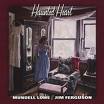 The record company, if that's not too grand a term, is Ferguson's. He is Lily's dad. Lily is pictured in the painting on the cover. Ferguson is self-effacing in that way, and also in giving credit; you'll notice that he put Mundell Lowe's name first. That no doubt reflects the respect he has for the guitarist, who was a mainstay of jazz in New York before Ferguson was born in 1950. Ferguson has spent much of his working musical life in Nashville, Tennessee, where he is in considerable demand in recording studios and television as a singer and as a bassist. Like Jay Leonhart and Kristin Korb, he sings and plays the bass at the same time. If I owned a concert hall, I'd hire the three of them to perform together. For now, however, I am content to listen to the magic that he and Lowe discovered a few years ago when they first toured together.
The record company, if that's not too grand a term, is Ferguson's. He is Lily's dad. Lily is pictured in the painting on the cover. Ferguson is self-effacing in that way, and also in giving credit; you'll notice that he put Mundell Lowe's name first. That no doubt reflects the respect he has for the guitarist, who was a mainstay of jazz in New York before Ferguson was born in 1950. Ferguson has spent much of his working musical life in Nashville, Tennessee, where he is in considerable demand in recording studios and television as a singer and as a bassist. Like Jay Leonhart and Kristin Korb, he sings and plays the bass at the same time. If I owned a concert hall, I'd hire the three of them to perform together. For now, however, I am content to listen to the magic that he and Lowe discovered a few years ago when they first toured together.
In his fine notes for the album, Richard M. Sudhalter writes, "A high tenor male voice is a rarity in professional music these days, and the tendency is not to take it seriously....." Ferguson must be taken seriously because his musicianship is as powerful in his singing as in his playing. From the instant vocal swing he achieves on the propulsion of Lowe's four-bar introduction of "Gone With The Wind" to the close of the CD with one unelaborated chorus of "I'll Be Seeing You," Ferguson's singing is without flaw. His bass playing finds the right groove on every one of the eleven songs, and it seems to me that his swing, singing and playing on "Mean To Me" combine in a little masterpiece. His bass work is as agile as he wants to make it, but in solo he does not indulge in fingerboard gymnastics. Ferguson and Lowe work beautifully together. Lowe's skill and inventiveness are firmly intact as he approaches his eighty-sixth year. That is evident in his solo features, "There's A Small Hotel" and his own "Big Star, Little Star." This is a kind and quality of chamber music we don't hear much any more, two masters of the art just playing, with no gimmick and no intent beyond making music.
The songs include "Haunted Heart," "My Foolish Heart," "Detour Ahead" and Mose Allison's "I Don't Worry About A Thing," which Ferguson personalizes simply by being Ferguson. He is almost unbearably moving in his vocals on Bill Evans' and Gene Lees' "Waltz For Debby" and that modern classic by Johnny Mandel and Paul Williams, "Close Enough For Love."
It's a joy to see Dick Sudhalter's byline again. If you're a Rifftides regular, you know what he's been going through. If you're not, there are several archive pieces about him, including this one. For background on Jim Ferguson beyond that in Dick's notes, see this biography.
Pete Candoli was an iron man in an iron-man calling. He played lead trumpet in the big bands of Tommy Dorsey, Glen Miller, Stan Kenton, Les Brown, Count Basie, Freddy Slack, Tex Beneke, Jerry Gray, Charlie Barnet and Woody Herman...among others. He became famous as Superman With A Horn in Woody Herman's First Herd of 1945 and '46. Later, he co-led a group with his younger brother Conte. He was a mainstay in the recording studios and on the sound stages of Hollywood. News of Pete Candoli's death January 11th at the age of 84 was made public today. Conte died in 2001.

Conte and Pete Candoli
Rifftides Readers sometimes send useful tips. Here are three:
Pianist Emil Viklický called our attention to this YouTube clip of him and two other Czech musicians sitting in with Dizzy Gillespie's band in a 1990 concert. In a moment of geographic confusion, Diz introduces them as our "Yugoslav brothers." The other Czechs are saxophonist Jiri Stivin, who plays a startling solo on pennywhistle, and trumpeter Juraj Bartos. Paquito D'Rivera is also aboard, on clarinet and alto. The bassist is John Lee, the drummer Ignacio Berroa. Does anyone recognize the tenor saxophonist? There is a guitarist whom we hear but never clearly see. Dizzy introduces the piece as "Straight, No Chaser." That melody line never materializes, and they end with "Billie's Bounce," but we get ten entertaining minutes of the blues in F and a reminder that no one was better than Gillespie at setting riffs behind a soloist.
called our attention to this YouTube clip of him and two other Czech musicians sitting in with Dizzy Gillespie's band in a 1990 concert. In a moment of geographic confusion, Diz introduces them as our "Yugoslav brothers." The other Czechs are saxophonist Jiri Stivin, who plays a startling solo on pennywhistle, and trumpeter Juraj Bartos. Paquito D'Rivera is also aboard, on clarinet and alto. The bassist is John Lee, the drummer Ignacio Berroa. Does anyone recognize the tenor saxophonist? There is a guitarist whom we hear but never clearly see. Dizzy introduces the piece as "Straight, No Chaser." That melody line never materializes, and they end with "Billie's Bounce," but we get ten entertaining minutes of the blues in F and a reminder that no one was better than Gillespie at setting riffs behind a soloist.
Saxophonist David Liebman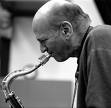
sent the following radio information:
I am being interviewed on the Musician's Show tomorrow (Wednesday-Jan 16 at 6PM-Eastern time in the U.S.) on the illustrious jazz station WKCR-FM broadcast from Columbia University in New York. I will be playing the music that shaped my aesthetic over the years. As I write now, I am putting together the music, which will include my first influences and teachers (Elvis, Tristano, Charles Lloyd) to the main saxophonists (Wayne Shorter, Trane, Sonny Rollins, Ornette Coleman, Lee Konitz, Joe Henderson); Miles and Bill Evans of course; world and classical music (Chopin, Beethoven and Bartok) as well as a few of my things and one track from a live gig that Quest just did a few months ago (Richie Beirach, Ron McClure, Billy Hart). Quest is playing Birdland in New York Feb 6-9. The show is three hours and hopefully the interviewer will be cool. You can google it and tune in anywhere in the world I believe. (I assume it will be archived).
To hear the program, tune in 89.9 FM in New York or listen on the web by going here.
Saxophonist, composer, arranger, bandleader and broadcaster 
Bill Kirchner's next Jazz From The Archives on WBGO radio will feature the singer and bassist Jim Ferguson, a world-class musician who might be better known if he lived in New York or Los Angeles. Ferguson is based in Nashville, Tennessee. Kirchner writes:
We'll hear recordings of Ferguson performing solo, with two quartets (accompanied by tenor saxophonist Chris Potter, pianists Pat Coil or Stefan Karlsson, and drummer Jim White), and in duo with the veteran guitarist Mundell Lowe. The show will air this Sunday, January 20, from 11 p.m. to midnight, Eastern Standard Time.
In the New York area, WBGO is at 88.3 FM. On the internet, go here. Before the week is out, I expect to have a Rifftides item about the Mundell Lowe/Jim Ferguson CD.
It was a piano weekend in apple, wine and snow country in the shadow of the Cascade mountains. Two of the premier jazz pianists of the twenty-first century played here. Fresh from Los Angeles, Jan Lundgren had just recorded for Fresh Sound Records a trio CD of the music of Ralph Rainger. Bassist Chuck Berghofer and drummer Joe LaBarbera, who were on the record session, did not make the trip north.
The Swedish pianist had one rehearsal Saturday afternoon with Seattle bassist Jon Hamar and Don Kinney, principal percussionist of the Yakima Symphony Orchestra and a seasoned jazz drummer. In an interview at the rehearsal, Kinney told a television reporter, "Sixteen bars into the first tune, I felt as if I'd been playing with this guy all my life." That's how the three sounded Saturday night at The Seasons performance hall. It was a demonstration that under the right circumstances, the universal language common to experienced jazz musicians can bind the best of them together even on short notice.
Lundgren chose one of Rainger's best-known songs, "Easy Living," a cross-section of great American songbook pieces by Rodgers, Gershwin, Porter, Kaper, Ellington, Monk and Don Redman, and a pair of traditional Swedish songs including "Ach Warmeland du Skona" (aka "Dear Old Stockholm"). He dazzled the audience with his technique and his warmth. All hands got plenty of solo time, and the ad hoc Lundgren trio got a standing ovation.
Sunday afternoon, Jessica Williams
Jessica Williams
played a private concert at the home of a fan who is also a pianist. On a small grand piano in a big living room packed with guests, she marked a return to her fascination with Thelonious Monk. One of the most engaging and skilled of Monk interpreters, Williams told her listeners that she had made an effort to move away from his music because for a time she wondered "where Jessica had gone." Not far, evidently; she and Monk were in perfect synch, the qualities of each on full display, nowhere more powerfully than in her composition "Monk's Hat." She premiered a new section of her recent "Freedom Suite," dedicated to the young Americans who serve in the Iraq war. "This is not a political statement," she said. "It's a tribute to those boys and girls." The melody, in long tones over an ostinato figure, was a meditation, a reflection, quite unlike anything else she played in the recital. Williams found a spellbinding medium-tempo groove for "Smoke Gets In Your Eyes." The two-hour recital ended with "I Love You, Sweetheart Of All My Dreams," a 1926 pop chestnut that Monk once recorded unaccompanied. It was laced with his humor, her humor and stride passages that might have come from James P. Johnson. Williams's altered changes would certainly have made James P. sit up and take notice--and smile.
Through our Washington, DC, correspondent John Birchard, Rifftides has updated you from time to time on the fight against the Bush administration's attempt to dismantle or downgrade the English language broadcasts of the Voice Of America. Birchard reports that there has been, if not an all-out victory, significant progress.
Concerning the battle to keep the English language news division at VOA alive: we won!
A two-year battle with our own management ended when Bush signed a budget bill that included specific language restoring the funds for English news as well as some language services that had been targeted for extinction (Russian, etc.). Not only that, the Congress included language (and funds) to restore some short- and medium-wave transmissions which will begin to expand our terribly shrunken reach.
Heroes in this tedious fight are the Chair of the Foreign Ops Subcommittee on Appropriations, Rep Nita Lowey of NY, and the ranking Republican on the subcommittee Frank Wolf of Virginia. But beyond their work, we found another member of Congress to whom we now refer as Our Lady on the Hill, Rep Betty McCollum, D of MN. She's a former Peace Corps volunteer who was (and remains) a fan of VOA. She's been a key defender for us and we can't thank her enough for her efforts.
When I came to VOA fifteen years ago, I never expected to be involved in politics, nor did I want to. But this fight for survival has forced me (and a number of others) to learn the ropes of Washington behind-the-scenes legislative work. Like the making of sausage, it's a process better left to the imagination.
And it's not over. In February, when the fiscal '09 budget is unveiled, we fully expect that management will again try to shut us down. But this time we don't have to re-invent the wheel. We've done the research, cultivated the contacts, gotten on a first-name basis with the committee staffers who make things happen in the halls of Congress and know the battle goes not to the swift but to the plodding, every-day scut work where you win some, lose some and come back to fight another day. And never give up.
That's your Washington report for today.
John Birchard
For John's previous report, go here. This discussion started following a Rifftides piece about the VOA's honored jazz broadcaster Willis Conover. If you search the archive (right-hand column) for Conover's name, you will find other posts on the matter.
In the 1950s and early sixties, there was a vogue for combining jazz and poetry. It wasn't new. Poets as far back as Langston Hughes in the 1920s read their work in collaboration with jazz musicians, usually in the privacy of homes, rarely in public. Thirty years later the idea sprang up again in beatnik pads in San Francisco and New York's East Village, then spread to coffee houses, night clubs, recordings and on at least one occasion, a Los Angeles concert hall. For David Amram's recollection of the role that he, Jack Kerouac and Philip Lamantia played in the New York phenomenon, go here. In the west, Alan Ginsburg, Gregory Corso, Kenneth Patchen, Lawrence Ferlinghetti and Kenneth Rexroth were at the heart of the movement, along with musicians including Charles Mingus, Allyn Ferguson and Fred Katz. Here is a little of what  Rexroth wrote at the time about jazz poetry.
Rexroth wrote at the time about jazz poetry.
I hope the faddist elements of this new medium will die away. The ignorant and the pretentious, the sockless hipsters out for a fast buck or a few drinks from a Village bistro, will soon exhaust their welcome with the public, and the field will be left clear for serious musicians and poets who mean business. I think that it is a development of considerable potential significance for both jazz and poetry. It reaches an audience many times as large as that commonly reached by poetry, and an audience free of some of the serious vices of the typical poetry lover. It returns poetry to music and to public entertainment as it was in the days of Homer or the troubadours.Things are beginning to get out of hand. The other day Ralph Gleason, the jazz critic, said to me that he expected any day to see ads in the trade papers: "JAZZ POET: blues, ballad, upbeat, free verse or rhyme. Have tux. Will travel." And T.S. Eliot touring the kerosene circuit with Little Richard and the Harlem Globetrotters. Crazes are usually pretty empty, sterile things. It would be a pity if incompetents looking for a fast buck turned this into a temporary social disease like pee-wee golf or swallowing goldfish.
That didn't happen. Rather, the movement had a brief period of attention, then faded into a subterranean region of the culture. Could it resurface into the mainstream? Maybe so, if Robert Pinsky, the former poet laureate of the United States, continues his interest in jazz and poetry. Pinsky combined forces the other night with the veteran drummer Andrew Cyrille. Paul Lieberman reported on their performance in The Los Angeles Times.
Pinsky, who proved to be a populist poet laureate by inviting Americans to send him their favorite verses, indeed teaches at Boston University. But the plan did call for him to try one exercise out of the jazz world, not academia: a round of "trade fours" with the drummer, Cyrille. Normally, musicians throw a few bars back and forth, "just have a conversation," the drummer noted, the wrinkle here being that Pinsky would throw him couplets instead, two-line rhyming poems, such as one by J.V. Cunningham that went, "This Humanist, whom no belief constrained, / Grew so broad-minded he was scatter-brained."
To read all of Lieberman's story, go here.
In 1957, Kenneth Rexroth recorded an album of his jazz poetry in San Francisco at The Cellar, a Chinese restaurant converted into a nightclub. The performance by Rexroth with a group that included tenor saxophonist Brew Moore and bassist Ron Crotty is reissued on this CD. It discloses that Pinsky was not the first poet to trade fours with jazz players. This essay from the Rexroth Archives contains the poet's observations on the form.
As far as I know, Pete Winslow never recorded his poetry, with or without a jazz group, but I played once while he read. Pete and I were in journalism school together at the University of Washington. He edited the campus humor magazine and sometimes wrote poetry for it under the pseudonym Eleanor H. Browning. He was a tall, skinny guy with short hair and horn-rimmed glasses. He often seemed to be smiling, even when he wasn't. This badly reproduced picture from the yearbook will give you an idea of the seriousness with which he took his job as editor of Columns, the humor magazine. After graduation, Pete worked for the Seattle Post Intelligencer, I for The Seattle Times. Before long, I left for the Marine Corps. Four years later, I was a civilian again and in my first television job in Yakima, Washington, where, strangely enough, I have settled after four decades as a journalism gypsy. But I digress.
from the yearbook will give you an idea of the seriousness with which he took his job as editor of Columns, the humor magazine. After graduation, Pete worked for the Seattle Post Intelligencer, I for The Seattle Times. Before long, I left for the Marine Corps. Four years later, I was a civilian again and in my first television job in Yakima, Washington, where, strangely enough, I have settled after four decades as a journalism gypsy. But I digress.
Bob Mitchell and, I both trumpet players, used to sit in at the Enchanted Gardens of the Chieftan Hotel in the heart of downtown Yakima with an all-girl trio from Los Angeles, The Three Vees. One night in 1960 or '61 I looked into the audience from the bandstand of the Enchanted Gardens and, to my considerable surprise, saw Pete Winslow, smiling. Really smiling. When the tune ended, we had a reunion. He presented me with a copy of his first book of poetry, Whatever Happened To Pete Winslow? (Tolle House, 1960) and signed it. I asked him if he'd like to read some of his work to the Enchanted Gardens audience of cowboys, used car salesmen, secretaries and orchardists. He said he would. I cleared it with Mitch and the Three Vees--Verna, Paula and Mary Ann. They were game for anything. It was that kind of band.
We played behind him, listened closely, filled when he paused, reacted when he emphasized passages and, in general, sounded as if we had rehearsed. Pete became the sixth member of the band. It could have been a disaster, but it worked. We enjoyed it and so did the crowd. No one threw anything. Pete went on to establish something of a reputation in San Francisco's North Beach. Although he read in coffee houses toward the end of the brief heyday of the beatniks, he never really qualified as a beat poet. Perhaps his work was too cheerful, too surrealistic I don't remember which of his poems Pete read that night at the Chieftan. He may have included this one, which has gained a small amount of fame:
FORMPeter Peter Pumpkin Eater
Is trochaic tetrameter.
Or this one:
UNDERGROUND RUBIYATA book of verses, underneath the Bau-
delaire, some bread, a real Guernsey cow,
mooing beside me, darling Filthy Bess - -
Ah, Filthy Bess were Mary Pickford now!That great inverted bowl there, on the floor;
Why did I walk so quickly through the door?
Now stains and bits of cabbage spot the wall
Where moving Fingers writ the football score.Come, spill the soup! And in the mire I sing,
You bitter varmint, waiting sentencing.
The bird of time has taught a turtle how
To stutter, and--the turtle's stuttering!
Pete died at the age of thirty-seven of complications following surgery. He wrote a novel, Mount Gogo, which seems to have disappeared, and five volumes of poetry, none in general circulation today but all available if you look hard enough. They are Whatever Happened to Pete Winslow? The Rapist and Other Poems, Monster Cookies, Mummy Tapes and Daisy in the Memory of a Shark.
Pete was a good guy. I miss him. For more about Winslow, see this article at Poetry Bay.
During those Enchanted Gardens days, Bobby Mitchell had a part-time job as a garbage man; there wasn't much steady work for jazz trumpet players in Yakima. Nor is there now. A fine player, he eventually solved the problem by getting out of town and working with Count Basie and Earl Hines. He is on several Basie CDs from the late 1970s, including this one. He is the featured soloist on this video clip of the Basie band at Montreux in 1977. Mitch died a few years ago. I miss him, too.
Here is part of a Rifftides piece from last March:
When I listen to the two-track analog stereo recordings Roy DuNannmade for the Contemporary label shortly after the perfection of stereo in the 1950s, I curse the boneheads who, because they could, introduced multi-track, multi-microphone recording. Digital capability then came along with 587-channel mixing boards and made post production a sci-fi adventure that compounded all of the engineering wizards' sins. Red Mitchell was right; simple isn't easy. That applies to everything in life, especially audio engineering. Rudy Van Gelder, nominated by acclamation as the god of jazz recording, was better in early stereo than after he got all the toys. For one thing, in the fifties his pianos sounded more like pianos.
I concluded that piece,
Last I heard, Roy DuNann was still with us, living in Seattle. Won't someone bring him out of retirement?
DuNann has not come out of retirement, but It developed that the jazz journalist Thomas Conrad found him five years earlier and wrote a long piece about him for Stereophile magazine. Whether reading about audio gear and techniques makes you quiver or you're a listener who simply relishes quality sound, this warm-hearted article will make you feel good. It includes a sidebar list of some of the best albums DuNann recorded at Contemporary. To read Tom's piece, click here.
Last fall, Rick Chin and other members of the Pacific Northwest chapter of the Audio Engineering Society invited DuNann, now well into his eighties, to come to a meeting and talk about his achievements. Clarinetist William O. Smith, who was on several Contemporary albums that DuNann recorded, also spoke. To visit the AES website and listen to an MP3 of that meeting (in excellent sound, of course), go here. You'll find the MP3 links at the bottom of the page about the meeting, which also has photos of DuNann, Smith and Conrad. When Rick Chin sent me a message about this, he wrote, "The files are rather large in the interest of fidelity." I hope that your computer can accommodate them. Long live two-track stereo.
Paoli Mejias, Transcend (PMCD). A gifted 37-year-old percussionist, Mejias has been an admired figure in Latin music for years. Now, like some of his colleagues on this stimulating CD, he is breaking through to a wider audience. Miguel Zenón is on a couple of tracks, another talented young alto saxophonist, Jaleel Shaw, on others. Zenón's rhythm section--Luis Perdomo, Hans Glawischnig and Antonio Sánchez--give strong support, but the fiery Mejias is clearly in charge.
Frank Sinatra, A Voice In Time (1939-1952) [Legacy]. The four CDs in this elegant black box begin with "All Or Nothing At All" and end with "I'm A Fool To Want You." They encompass a large percentage of what Sinatra recorded for Columbia and RCA Victor, first as the boy wonder of band singers, finally as a mature solo performer setting standards of musicianship and taste that singers will be trying to meet for decades longer than you or I will be around to listen.
Sarah Vaughan Live In '58 & '64 (Jazz Icons). In the earliest of these European concerts, the divine Sarah is girlish and shy. By 1964, she had more confidence on stage and occasionally slid into grand vocal mannerisms. In all cases, she was magnificent, one of the most spectacularly gifted vocalists in history. For a complete Rifftides review of this essential DVD, go here.
András Schiff, Ludwig Van Beethoven, The Piano Sonatas, Vol. V (ECM). This leg of Schiff's journey through the 32 Sonatas finds him in Beethoven's middle period. Of the four included here, those given names as well as opus numbers are the most famous; "The Tempest," "The Hunt" and "Waldstein." The brilliant Austrian plays them with grace, passion and his celebrated touch and dynamic sense. But I find myself going back to the earliest of the set, number 16 in G-Major, for the unexpected treasure Schiff finds in the adagio movement. His complete sonatas project is on the way to ranking with Arthur Schnabel's and Richard Goode's.
Philip Larkin, All What Jazz (FSG). Perhaps I was too harsh when I called the late British poet and jazz critic a troglodyte. It must be admitted, however, that he found it difficult to say anything favorable about modern jazz without backing into the compliment. "I never liked bop," Larkin wrote. It seemed to me a nervous and hostile music, at odds with the generous spirit of its predecessors. But it had its masters. One of these was Clifford Brown..." Still, even his most wrong-headed conclusions can make entertaining reading. It is getting harder and harder to find this book. Now might be the time to snag a copy.
If you go to the right-hand column and scroll down to Doug's Picks, you will find five new recommendations. To browse back through more than a year-and-a-half of recommendations, click on "More Picks" at the end of the current batch.
Rifftides reader Jim Denham sent a message reminding us that today is the 100th anniversary of the birth of Henry Red Allen. Allen was the New Orleans veteran whom in the 1960s the iconoclastic young trumpeter Don Ellis famously called "the most avant garde trumpet player in New York."
Allen was the New Orleans veteran whom in the 1960s the iconoclastic young trumpeter Don Ellis famously called "the most avant garde trumpet player in New York."
Ellis is quoted further in a tribute Mr. Denham posted on a web site with the intriguing name of Shiraz Socialist. Mr. Denham's piece is well written, historically accurate and worth reading. It incorporates guitarist Jim Douglas's touching memoir of Allen's final tour in the UK in 1967. It also links to a video clip of Allen with the Alex Welsh band, playing and singing "St. James Infirmary," one of his specialties. And it includes a description of Allen's playing by the poet Philip Larkin. Larkin was a troglodyte in many of his jazz assessments, but not in this one:
There was always something unusual about Allen's playing: even at the start he tended to sound like Armstrong in a distorting mirror, and by the end of his life an Allen solo was a brooding, gobbling, stretched, telegraphic thing of half notes and quarter-tones, while an Allen vocal sounded like a man with a bad conscience talking in his sleep. (All What Jazz, Faber and Faber) .
To read the Denham article and see the video, click here.
For more of Allen, watch his performance of "Rosetta" from the 1958 CBS program The Sound Of Jazz. His colleagues are Coleman Hawkins, tenor saxophone; Vic Dickenson, trombone; Rex Stewart, cornet; Pee Wee Russell, clarinet; Nat Pierce, piano; Danny Barker, guitar; Milt Hinton, bass; and Jo Jones, drums. Whew.
In 1957, having wrestled my commission from the United States Marine Corps and been given three days' leave, I traveled from Quantico, Virginia, to New York. I got off the train at Penn Station, grabbed something to eat at a delicatessen, checked into a cheap hotel and walked up Broadway to the Metropole Restaurant. Just as I arrived, a very long Cadillac pulled up to the curb. From the driver's seat emerged the majestic figure of Red Allen, trumpet case in hand. Inside, his band was waiting. 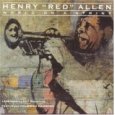 It was the one on this CD, a required item in every basic collection. At the Metropole, the back bar was the bandstand, so narrow that it could accommodate the musicians only if they arrayed themselves shoulder to shoulder along its length. That was true of small groups like Allen's and of big ones like Woody Herman's. I stood--at the Metropole, nearly eveyone stood--listening enthralled until the place closed. I walked out just behind Red Allen, who got into his Cadillac parked under a "No Parking" sign and drove off into the night. I've always wondered what kind of arrangment he had with the Midtown North Precinct of the NYPD.
It was the one on this CD, a required item in every basic collection. At the Metropole, the back bar was the bandstand, so narrow that it could accommodate the musicians only if they arrayed themselves shoulder to shoulder along its length. That was true of small groups like Allen's and of big ones like Woody Herman's. I stood--at the Metropole, nearly eveyone stood--listening enthralled until the place closed. I walked out just behind Red Allen, who got into his Cadillac parked under a "No Parking" sign and drove off into the night. I've always wondered what kind of arrangment he had with the Midtown North Precinct of the NYPD.
Roger Kellaway, still high on the news of his award by the French, sent a succinct message with a link. The link takes you to a performance by Zoot Sims. The transcription blowup on the wall behind the bandstand identifies the club as the lamented Donte's in Los Angeles. Here is Roger's message in its entirety:
A fun trip down memory lane
The rhythm section is Kellaway, bassist Chuck Berghofer and drummer Larry Bunker. Like his playing, Zoot's style of hair and dress remained pretty much unchanged for the last two decades of his life, thank goodness, but the costumery and hairdos on Kellaway and Bunker seem to place this in the late 1970s. Play this only if you want to feel good.
Big cities do not have exclusive rights to major jazz artists. First-rank musicians play performance halls in small and medium-sized towns that New York, Los Angeles, London, Paris and Tokyo may think of as the hinterlands. Here are five US examples, among dozens.
Saturday, January 12, pianist Stanley Cowell will play a concert at Cityfolk in Dayton, Ohio. Go here to read about it.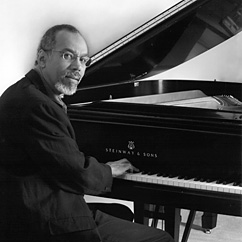 Check out the left-hand column of the Cityfolk page for the future lineup of pianists--Steve Kuhn, Bruce Barth with Terrell Stafford, Bill Charlap with Houston Person. There's serious listening in Dayton.
Check out the left-hand column of the Cityfolk page for the future lineup of pianists--Steve Kuhn, Bruce Barth with Terrell Stafford, Bill Charlap with Houston Person. There's serious listening in Dayton.
 The same evening, the brilliant Swedish pianist Jan Lundgren plays a trio concert at The Seasons in Yakima, Washington, his only US engagement following a recording session in Los Angeles and an evening at the Jazz Bakery. Nancy King will play The Seasons on January 26, the Bill Charlap Trio on February 16.
The same evening, the brilliant Swedish pianist Jan Lundgren plays a trio concert at The Seasons in Yakima, Washington, his only US engagement following a recording session in Los Angeles and an evening at the Jazz Bakery. Nancy King will play The Seasons on January 26, the Bill Charlap Trio on February 16.
In February, The Shedd Institute will present The Bad Plus, a highlight of the winter season in Eugene, Oregon. The town will never be the same.
Wynton Marsalis brings the Jazz At Lincoln Center Orchestra to The Outpost in Albuquerque, New Mexico. They'll be followed by Pat Metheny with Christian McBride and Antonio Sanchez.
 At Cambria on the California coast halfway between L.A. and San Francisco, The Hamlet At Moonstone Gardens becomes a concert hall on Sundays. Vibraphonist Charlie Shoemake and his vocalist wife Sandi bring in other name musicians. Tomorrow, January 6, the guest will be big band trumpet mainstay Don Rader. January 20 alto saxophonist Lanny Morgan (pictured above) joins the Shoemakes with pianist Tom Ranier, bassist Tom Warrington and drummer Joe LaBarbera.
At Cambria on the California coast halfway between L.A. and San Francisco, The Hamlet At Moonstone Gardens becomes a concert hall on Sundays. Vibraphonist Charlie Shoemake and his vocalist wife Sandi bring in other name musicians. Tomorrow, January 6, the guest will be big band trumpet mainstay Don Rader. January 20 alto saxophonist Lanny Morgan (pictured above) joins the Shoemakes with pianist Tom Ranier, bassist Tom Warrington and drummer Joe LaBarbera.
Think Topeka, Kansas, isn't hip? The Topeka Jazz Workshop recently had concerts by Gary Foster and by B.E.D. with Rebecca Kilgore, Eddie Erickson and Dan Barrett. This winter, the hall has booked dates by the rising young pianist John Proulx and by Tiger Okoshi, a trumpeter who has melded into academia but lost none of his power to astonish listeners.
Look around your area. There may be more music than you think.
Home computers and cell phones became realities after Paul Desmond died in 1977. Given his fascination with electronic devices, I am certain that if he were alive, he would be addicted to all things digital. 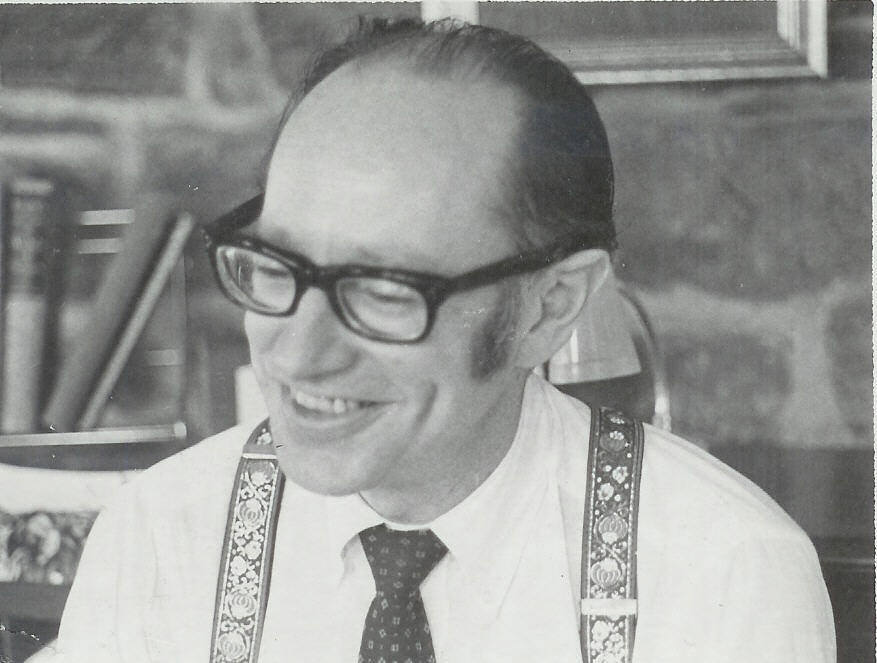 Paul would love the idea of a program shooting through the ether into a computer and onto a compact disc.
Paul would love the idea of a program shooting through the ether into a computer and onto a compact disc.
Producer Paul Conley alerts Rifftides readers that his National Public Radio Jazz Profiles program on Desmond is now available as a free MP3 download at the NPR Music site. Nancy Wilson is the host. Her guests include Dave Brubeck, Eugene Wright, Jim Hall, John Snyder, Gene Lees, yours truly and, on tape, Desmond himself.
Desmond on Brubeck's polytonality in their early days:
He would be in fifteen different keys on an out-of-tune piano and there were occasions when I was totally desperate about the situation.
Jim Hall:
Some people moved into the apartment across the hallway from him who were playing sort of garbage du jour, loud, all the time. So one time Paul just lost it and he put on a Bartok record, very loud, went across the hall, banged on the door, somebody opened the door and he said, "You hear that? It's called music. How do you like it?"
The program was created before research for Take Five: The Public and Private Lives of Paul Desmond unearthed new information about Desmond. It perpetuates the story Desmond concocted that he chose his last name from a telephone book. From Take Five, here's fellow saxophonist Hal Strack's recollection of the inspiration for the change from Breitenfeld to Desmond. It came at Sweets Ballroom in Oakland, California.
We were listening to Gene Krupa's band, sometime in 1942. Howard Dulany had just left as the singer. The guy who replaced him had some kind of a convoluted Italian name and they decided that just wasn't going to work for a vocalist. I mean, it was more difficult than Sinatra. So, he changed his name to Johnny Desmond.* We were standing there listening to the band and discussing the fact that this had happened, and Paul said, "Jeesh, you know that's such a great name. It's so smooth and yet it's uncommon. If I decide I need another name, it's going to be Desmond."
Besides, he told someone later, Breitenfeld was too long to fit on a 78-rpm record label. In 1946, he went to the courthouse and made the change legal.
The program has plenty of music, including a fascinating section that illustrates Desmond's ability to play counterpoint not only with Brubeck but also with himself. To download or listen to the hour-long Desmond Jazz Profiles program, follow this link.
*Johnny Desmond (1920-1985), the son of Italian immigrants, was born Giovanni Alfredo de Simone in Detroit in 1919. As a boy soprano, he won a radio talent contest. The name change quickly followed.
Rifftides reader Rich Juliano comments on the Jaki Byard item in the previous exhibit :
Back in 1985 Jaki was a clinician at the Tri-C Jazz Festival in Cleveland where I grew up. As an aspiring jazz pianist I was excited to attend his piano clinic but terrified when he asked for duet partners and one of my teachers volunteered me. I was so nervous I called "Stella by Starlight" in the wrong key! Nonetheless Jaki got the tune started (in the key I meant to call) and was very complimentary and gracious, commenting on my relative youth when he asked my age (18 at the time). He's been a favorite of mine ever since. Unfortunately that was the only chance I ever had to see/hear Jaki live. My encounters with him that week remain among the highlights of my jazz listening and studies. Thanks for featuring him today!
I'm happy to tell Mr. Juliano that today I came across two YouTube clips of Byard at a jazz workshop in Berlin in 1965. In the beginning of the first one (that's a link), he plays free with Reggie Workman on bass and Alan Dawson on drums, then works his way into what sounds to me like "I Love Being Here With You." In the second clip, towering eminences of the piano meet when Byard and Earl Hines face one another and play "Cherry." To borrow a phrase from Louis Armstrong, "Chops is flyin' everywhere."
Reading Gary Giddins's tribute to Jaki Byard in the February Jazz Times stimulated memories of that astounding pianist. Giddins builds his article around the CD called Sunshine Of My Soul, reviewed in Rifftides last March. The magazine is now on news stands. The piece is not available on line.
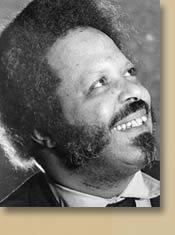
Memory 1
I was at the recording session for the Phil Woods album Musique Du Bois in RCA's storied Studio B in New York in 1974. The rhythm section was Byard, bassist Richard Davis and drummer Alan Dawson. Phil later wrote that the album "never settled, never got off the paper," but that he liked my liner notes. I am flattered by his second asssertion puzzled by the first; the album still sounds good to me. When 32 Jazz reissued Musique Du Bois as a CD, they eviscerated the notes, but in this book they are reproduced intact. Here's a snippet:
Jaki Byard wanders in, looking, as always, slightly bemused and mystical. He greets the others and sets about testing the piano. Asked how he likes it, Byard says, "It's a piano. I had a good one once, in France." The universal suffering of jazz pianists; an endless chain of inadequate instruments binds them together as surely as their love for Art Tatum.
Memory 2
Paul Desmond and I stood in the ballroom of the Royal Orleans hotel during the 1969 New Orleans Jazz Festival listening to a jam session that included Byard and Roland Kirk. Jaki finished a virtuosic piano solo, then jumped to his feet, grabbed an alto saxophone and played with an intensity to match Kirk's wildness. Desmond said, "I wish he'd mind his own business."
Memory 3
Later that week, among the guests on a television program I hosted were Byard, Desmond, Al Belletto and Danny Barker, who I have always considered the world's second greatest rhythm guitarst after Freddie Green. In a discussion of Kansas City style, I asked Byard and Barker to demonstrate. They had never played together. Jaki demurred. He said that he couldn't do justice to what Count Basie had perfected. I coaxed. Finally, he moved to the piano, Barker unsheathed his guitar and two great musicians of widespread generations worked their way into into a blues that captured the essence of Basie and Green. How I wish that I had a recording of that encounter.
Memory 4
The house band at the '69 New Orleans JazzFest was Byard, trumpeter Clark Terry, tenor saxophonist Zoot Sims and bassist Milt Hinton, with Dawson on drums. Among their appearances were an evening on a Mississippi riverboat and support for assorted soloists at main festival events. This CD captures their concert with Sarah Vaughan, one of her most inspired and most likely the only recording she made between 1967 and 1971. On this CD the house band backs trumpeters Roy Eldridge, Dizzy Gillespie, Buck Clayton, with Terry and Bobby Hackett making a guest appearance on Eldridge's set. Byard's kaleidoscopic solo on "Rifftide" with Eldridge was a highlight of the festival.
Jaki has received a good deal of attention lately with the release of a previously unissued 1964 Cornell University concert by the Charles Mingus Sextet--covered in this Rifftides review--and a Jazz Icons DVD of several of the Mingus group's European concerts the same year. It would be difficult to exaggerate the importance of the musicianship and excitement he contributed to that remarkable band and, indeed, to music in the last half of the twentieth century. The mystery of his 1999 death at seventy-six by gunshot in his home remains unsolved.
For a substantial profile of Jaki Byard, including audio clips of him and musicians who admired him, go to this NPR profile.
New Year's Day - Now is the accepted time to make your regular annual good resolutions. Next week you can begin paving hell with them as usual.--Mark TwainThe only way to spend New Year's Eve is either quietly with friends or in a brothel. Otherwise when the evening ends and people pair off, someone is bound to be left in tears.--W.H. Auden
Drop the last year into the silent limbo of the past. Let it go, for it was imperfect, and thank God that it can go.--Brooks Atkinson
May all your troubles last as long as your New Year's resolutions.--Joey Adams
Ring out the old, ring in the new,
Ring, happy bells, across the snow:
The year is going, let him go;
Ring out the false, ring in the true.
--Alfred, Lord TennysonFor last year's words belong to last year's language and next year's words await another voice.--T.S. Eliot
Hugh Massingberd, the longtime obituaries editor of The Telegraph of London, died on Christmas day at the age of sixty. From 1986 to 1994, Massingberd converted the dullest page in the paper into one so entertaining that his obits were collected in six anthologies. In her obituary of Massingberd in today's New York Times, Margalit Fox wrote that he spoke "frankly, wittily and often gleefully ill of the dead." She provided translations of some of his terms.
To dispatch his subjects, Mr. Massingberd used the thinnest of rapiers, but also the sharpest. Cataclysmic understatement and carefully coded euphemism were the stylistic hallmarks of his page. Here, for the benefit of American readers, is an abridged Massingberd-English dictionary:
"Convivial": Habitually drunk.
"Did not suffer fools gladly": Monstrously foul-tempered.
"Gave colorful accounts of his exploits": A liar.
"A man of simple tastes": A complete vulgarian.
"A powerful negotiator": A bully.
"Relished the cadences of the English language": An incorrigible windbag.
"Relished physical contact": A sadist.
"An uncompromisingly direct ladies' man": A flasher.
To read all of the Massingberd obituary, go here.
AJ Ads
AJ Blogs
AJBlogCentral | rssculture
Terry Teachout on the arts in New York City
Andrew Taylor on the business of arts & culture
rock culture approximately
Laura Collins-Hughes on arts, culture and coverage
Richard Kessler on arts education
Douglas McLennan's blog
Dalouge Smith advocates for the Arts
Art from the American Outback
Chloe Veltman on how culture will save the world
For immediate release: the arts are marketable
No genre is the new genre
David Jays on theatre and dance
Paul Levy measures the Angles
Judith H. Dobrzynski on Culture
John Rockwell on the arts
innovations and impediments in not-for-profit arts
Jan Herman - arts, media & culture with 'tude
dance
Apollinaire Scherr talks about dance
Tobi Tobias on dance et al...
jazz
Howard Mandel's freelance Urban Improvisation
Focus on New Orleans. Jazz and Other Sounds
Doug Ramsey on Jazz and other matters...
media
Jeff Weinstein's Cultural Mixology
Martha Bayles on Film...
classical music
Fresh ideas on building arts communities
Greg Sandow performs a book-in-progress
Harvey Sachs on music, and various digressions
Bruce Brubaker on all things Piano
Kyle Gann on music after the fact
Greg Sandow on the future of Classical Music
Norman Lebrecht on Shifting Sound Worlds
Joe Horowitz on music
publishing
Jerome Weeks on Books
Scott McLemee on books, ideas & trash-culture ephemera
theatre
Wendy Rosenfield: covering drama, onstage and off
visual
Public Art, Public Space
Regina Hackett takes her Art To Go
John Perreault's art diary
Lee Rosenbaum's Cultural Commentary

